Protecting Athletes: Customized Sports Mouth Guards for High Impact
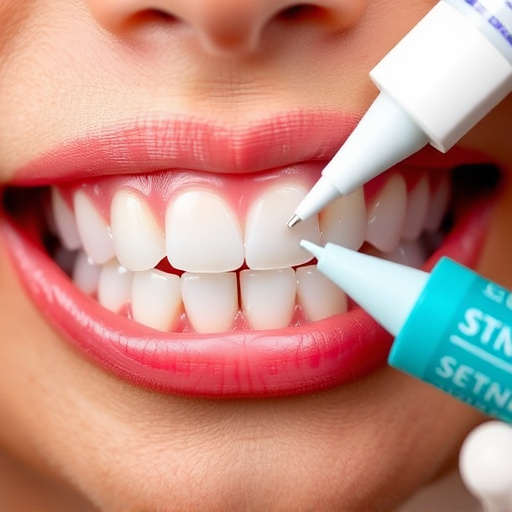
Participating in high-impact sports increases dental injury risks. Customized sports mouth guards ma…….
In the fast-paced world of sports, where competition drives performance and success, athletes often push their bodies to extreme limits. Among the various protective gear that has evolved over time, sports mouth guards have emerged as a critical component in ensuring athlete safety, particularly in contact sports. This comprehensive article aims to explore the multifaceted world of sports mouth guards, delving into their history, technology, global impact, and future prospects. By the end, readers will gain an in-depth understanding of why these seemingly simple pieces of equipment are essential for athletes worldwide.
A sports mouth guard, often referred to as a dental protector or sport guard, is a specialized piece of protective gear designed to cover and safeguard the teeth, gums, and associated soft tissues from impact-related injuries during athletic activities. It is typically made from flexible materials that mold to the shape of an athlete’s teeth, providing a snug fit. The core components include:
The concept of mouth guards in sports can be traced back to ancient civilizations where warriors and athletes used various materials—from wood to leather—to protect their mouths during combat and athletic events. However, the modern sports mouth guard as we know it today began to take shape in the mid-20th century. During the 1950s, dental professionals started customizing mouth guards for athletes involved in contact sports like football and boxing, marking a significant shift towards prioritizing oral health in sports safety.
Over time, technological advancements have revolutionized the design and materials used in sports mouth guards, making them lighter, more comfortable, and effective at preventing a range of oral injuries. Today, these guards are mandatory equipment in many high-contact sports, reflecting their critical role in athlete safety.
The use of sports mouth guards has transcended geographical boundaries, becoming a global standard for athlete safety, especially in contact sports. This widespread adoption can be attributed to several key trends and factors:
Growing Awareness of Oral Health: Increased awareness about the importance of oral health and its connection to overall well-being has driven athletes and sporting organizations worldwide to prioritize mouth guard usage.
Stringent Safety Regulations: Many countries have implemented stringent safety regulations, mandating the use of protective gear, including sports mouth guards, in various sports to reduce the risk of severe injuries.
Professional Sports Leagues Leading the Way: Major professional sports leagues, such as the NFL (National Football League) and NHL (National Hockey League), have set examples for grassroots sports by mandating mouth guard usage, influencing practices at all levels of competition.
Global Initiatives by Sporting Goods Manufacturers: Leading sporting goods manufacturers have launched initiatives to promote mouth guard use, providing educational resources and affordable options to athletes worldwide.
While the global adoption of sports mouth guards is a positive trend, there are regional variations in their usage and perceptions:
North America and Europe: These regions have generally higher rates of mouth guard usage due to advanced healthcare systems and stringent safety regulations. However, even here, compliance remains an ongoing challenge, particularly among recreational athletes and younger age groups.
Asia Pacific: The adoption of sports mouth guards is steadily increasing in this region, driven by growing awareness campaigns and the popularity of contact sports like rugby and football (soccer). Yet, cultural norms and cost considerations can influence adherence rates.
Developing Nations: In some developing countries, access to quality mouth guards and dental care remains a significant challenge. This gap highlights the need for affordable, readily available solutions tailored to local sporting needs.
The economic implications of sports mouth guards are multifaceted, influencing both athletes and the broader sporting ecosystem.
The global sports mouth guard market is a rapidly growing sector, driven by increasing demand from various sporting sectors, including amateur and professional leagues. According to a recent report by ResearchAndMarkets.com, the market size was valued at USD 304.2 million in 2021 and is projected to grow at a CAGR of 5.8% from 2022 to 2029. This growth is attributed to factors such as rising sports participation rates, increasing awareness about oral health, and stringent safety regulations.
The manufacturing landscape is characterized by:
Customized Solutions: There is a growing trend towards personalized mouth guard solutions, with athletes seeking guards tailored to their specific dental structures and playing styles. This shift has prompted manufacturers to invest in advanced molding technologies and digital design tools.
Innovative Materials: Researchers and manufacturers are exploring new materials, such as advanced polymers and bio-compatible substances, to enhance mouth guard performance, comfort, and biocompatibility.
Digital Transformation: The adoption of digital technologies, including 3D printing and virtual fitting, is allowing for faster customization and more precise fits, improving both comfort and effectiveness.
For athletes:
Cost Accessibility: While mouth guards can range from affordable options to high-end, customized designs, ensuring accessibility for all income levels remains a challenge. Sport-specific subsidies and insurance coverage for protective gear can help address this issue.
Long-term Cost Savings: Investing in proper mouth guard usage can reduce the risk of oral injuries, potentially saving athletes money on dental repairs and surgeries over their careers.
For sporting organizations:
Safety and Insurance: Mandating mouth guard use is a proactive step towards reducing liability for sports organizations, as it minimizes the risk of severe oral injuries that could lead to legal repercussions and increased insurance costs.
Brand Image and Player Welfare: Promoting athlete safety enhances a sport’s brand image and attracts sponsors, players, and fans who prioritize welfare and safety.
The evolution of sports mouth guard technology has been nothing short of remarkable, driven by advancements in materials science, digital design, and biomechanics research. These innovations have led to a new generation of mouth guards that offer improved performance, comfort, and customization options.
Digital Design and 3D Printing: This technology allows for precise, customized mouth guard designs tailored to individual athletes’ dental structures. By creating a digital model, manufacturers can print highly accurate and comfortable mouth guards, reducing the need for multiple fittings.
Smart Mouth Guards: Integrating sensors into mouth guards is a rising trend, enabling real-time monitoring of impact forces and athlete performance. These smart guards can provide valuable data to coaches, trainers, and athletes, helping to refine training techniques and prevent injuries.
Bio-Compatible Materials: Researchers are exploring materials with enhanced biocompatibility to minimize the potential for allergic reactions or irritation. These advanced polymers mimic natural tooth and gum tissues, improving overall comfort.
Customized Fit and Comfort: Incorporating ergonomic designs and adjustable features ensures a snug, comfortable fit, reducing the risk of mouth guards shifting during play, which could lead to dental damage.
Artificial Intelligence (AI) Integration: AI can revolutionize mouth guard design by analyzing vast datasets to predict optimal material properties and performance for different sports and individual athletes.
Wearable Technology Synergies: Combining mouth guards with wearable sensors and augmented reality could provide immersive training experiences, allowing athletes to visualize impact zones and improve technique.
Personalized Health Monitoring: Future mouth guards might integrate health-tracking capabilities, monitoring not just oral health but also overall athletic performance and recovery.
The regulation of sports mouth guards is a critical aspect of ensuring athlete safety and fostering fair play in global sports competitions. Various international sporting bodies and governments have implemented policies to standardize mouth guard requirements and promote their use.
World Health Organization (WHO): While not specifically focused on sports mouth guards, the WHO’s guidelines on oral health promote the use of protective gear in high-risk activities, influencing global sports safety standards.
International Olympic Committee (IOC): The IOC mandates the use of appropriate protective equipment, including mouth guards, in all Olympic sports, setting a benchmark for global sporting events.
National and Regional Sports Federations: Organizations like USA Gymnastics, Hockey Canada, and the Australian Institute of Sport have specific regulations regarding mouth guard usage, impact testing, and material standards.
Product Standards and Certifications: Several organizations, such as ASTM International and EN (European Norm), set product standards for sports mouth guards, covering factors like material safety, fit, and performance. These standards ensure a certain level of quality and protection.
Sports Specific Regulations: Different sports have unique requirements. For instance, contact sports like rugby may mandate specific impact-absorbing properties, while high-speed sports like track and field might focus on ensuring the guard doesn’t obstruct breathing.
Penalties for Non-Compliance: Non-compliance with mouth guard regulations can result in penalties for athletes, teams, or sporting organizations, including fines, disqualification from events, or suspension from competitions.
Despite their widespread adoption and technological advancements, sports mouth guards face several challenges and criticisms that require careful consideration and strategic solutions.
Comfort and Fit: Ensuring a comfortable fit can be challenging due to the variability in dental structures among athletes. Customization options are essential but can also increase costs.
Cost and Accessibility: High-quality mouth guards can be expensive, limiting access for lower-income athletes and amateur sports organizations. Subsidies and insurance coverage could help address this issue.
Impact Testing and Standardization: Ensuring that mouth guards meet specific impact absorption standards across different sports and manufacturers is a complex task. Standardized testing protocols and transparent reporting are crucial.
Effectiveness Concerns: Some critics argue that mouth guards do not prevent all oral injuries, especially in high-impact scenarios. However, extensive research has shown that properly fitted mouth guards significantly reduce the risk of dental fractures, lacerations, and soft tissue injuries. Continuous improvements in technology and materials will further enhance their effectiveness.
Breathing and Communication Issues: There are concerns that mouth guards might obstruct breathing or communication during intense physical activity. Advanced designs, including open-back and breathable models, address these issues while maintaining protection.
Misuse and Inadequate Fitting: Misuse or improper fitting of mouth guards can lead to inadequate protection. Educating athletes, coaches, and dental professionals about correct usage and fitting procedures is vital.
The National Football League (NFL) in the United States has been instrumental in promoting mouth guard use among professional athletes, setting a global standard for sports safety. The league implemented mandatory mouth guard requirements in the 1970s, leading to a significant reduction in oral injuries among players. By 2005, advanced technology and design standards had further enhanced protection, with over 95% of NFL players regularly wearing mouth guards. This success story highlights the power of stringent regulations and technological advancements in improving athlete safety.
Rugby union, known for its intense physical contact, has seen a remarkable transformation in mouth guard usage and technology. The International Rugby Board (IRB) introduced mandatory mouth guard requirements in 2005, leading to significant improvements in safety standards. Advanced impact-absorbing materials and designs have reduced the risk of severe oral injuries, with studies showing a 70% decrease in such incidents since the mandate. This case study underscores the positive impact of uniform regulations and technological innovations.
In the United Kingdom, a grassroots sports initiative focused on youth soccer implemented customized mouth guard programs, addressing the challenges of proper fit and cost accessibility for young athletes. By partnering with local dental practices and sporting goods manufacturers, they provided affordable, individually fitted mouth guards to over 5000 children. This program not only improved oral safety but also increased athlete participation rates and parental satisfaction.
The future of sports mouth guards is promising, with continuous technological advancements and a growing global awareness of their importance. Several trends and strategic considerations will shape this landscape:
Personalized Protection: Advanced digital design and 3D printing technologies will enable highly customized mouth guards tailored to individual athletes’ needs, ensuring optimal comfort and protection.
Integration with Wearable Tech: Mouth guards may evolve to incorporate wearable sensors, providing real-time data on impact forces, heart rate, and hydration levels, allowing for more precise athlete monitoring and performance optimization.
Global Standardization: As mouth guard technology advances, there will be a growing push for standardized testing protocols and global quality standards, ensuring consistent protection across all sports and regions.
Education and Awareness Campaigns: Continuous education initiatives targeting athletes, coaches, parents, and dental professionals will foster a culture of oral safety, encouraging proper usage and maintenance of mouth guards.
Sustainability Focus: With increasing environmental concerns, manufacturers may explore sustainable materials and practices for mouth guard production, reducing their ecological footprint.
Sports mouth guards are more than just pieces of protective equipment; they are essential tools in safeguarding athletes’ well-being and enhancing sports safety globally. From historical roots to modern technological advancements, these guards have evolved significantly, reflecting the growing importance of oral health in sports.
The global impact and trends highlight the widespread adoption of mouth guards across diverse sporting cultures, driven by increased awareness, stringent regulations, and advanced technologies. As we look to the future, ongoing innovations in design, materials, and integration with wearable technology promise even greater protection for athletes worldwide.
Addressing challenges and criticisms through strategic solutions and education will ensure that sports mouth guards continue to meet the evolving needs of the athletic community. By investing in proper mouth guard usage and technology, sporting organizations can foster a culture of safety, performance, and welfare, securing a bright future for sports at all levels.
While not mandatory in all sports, mouth guards are highly recommended for contact and high-impact sports to protect against dental injuries. Different sports have specific requirements regarding impact testing and protection standards.
Mouth guards should be replaced every 1-3 years, or sooner if they show signs of wear, damage, or no longer fit properly. Regular cleaning and maintenance are essential to ensure optimal performance and hygiene.
Properly fitted mouth guards should not obstruct breathing. Advanced designs, including open-back and breathable models, address this issue while maintaining protection. Ensuring a comfortable and secure fit is crucial for optimal function.
While specific studies are limited, some manufacturers are exploring sustainable materials and practices to reduce the ecological impact of mouth guard production. Proper disposal and recycling initiatives can also help minimize waste.
While mouth guards significantly reduce the risk of dental fractures, lacerations, and soft tissue injuries, they cannot guarantee complete protection in extreme scenarios. Continuous technological advancements aim to enhance their effectiveness, but athletes should remain aware of potential risks.

Participating in high-impact sports increases dental injury risks. Customized sports mouth guards ma…….
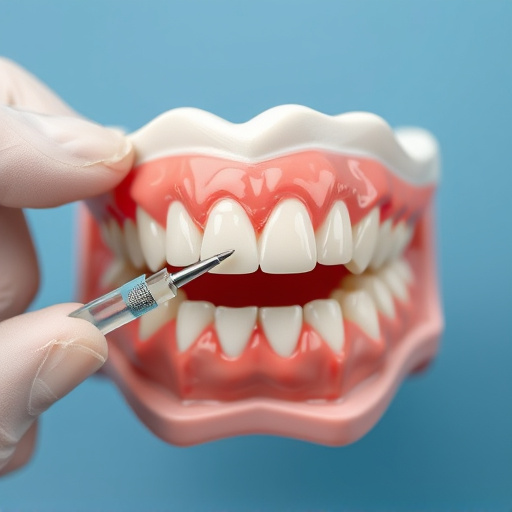
Proper sports mouth guard hygiene involves regular cleaning with water or specialized cleaners to pr…….
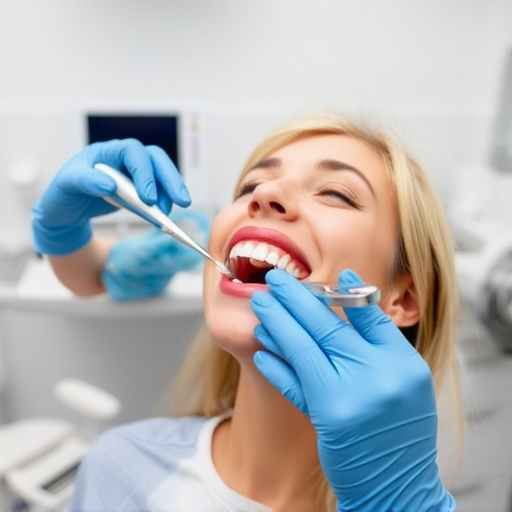
Sports mouth guards are essential safety gear for athletes, preventing dental injuries like chips an…….
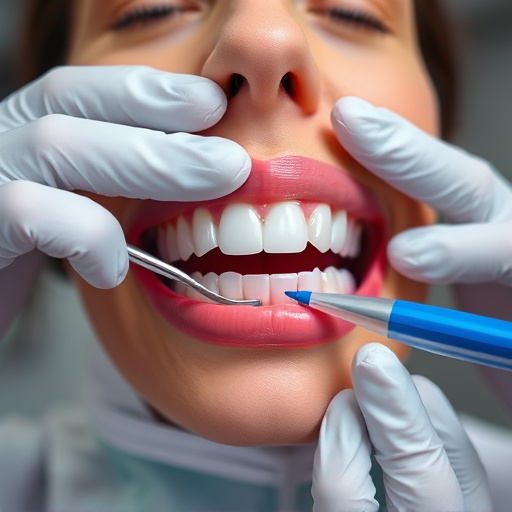
Sports mouth guards are essential for athletes to prevent dental injuries, with designs tailored to…….
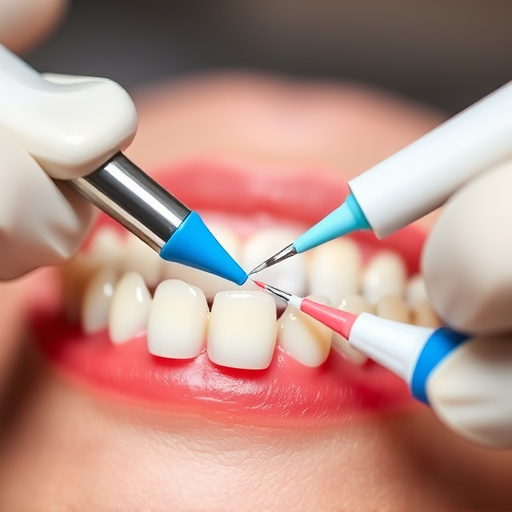
Sports mouth guards are crucial for protecting oral health and enhancing athletic performance in con…….
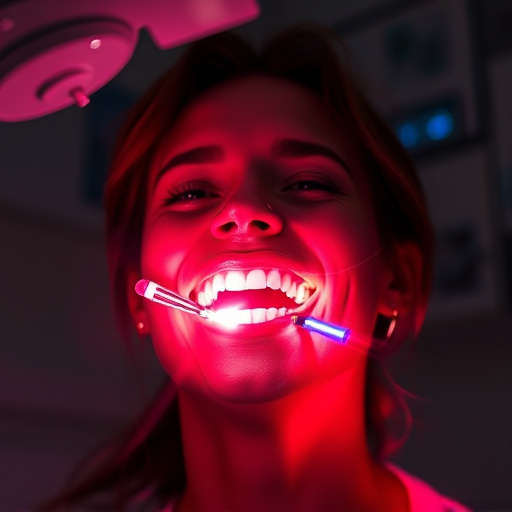
Sports mouth guards are essential protective gear for athletes, preventing dental injuries by shield…….